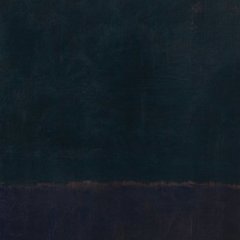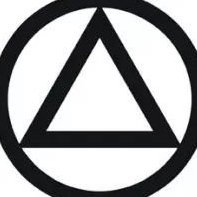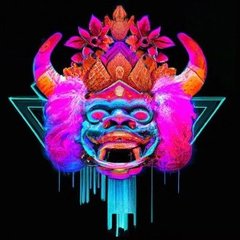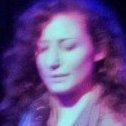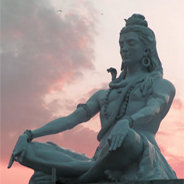-
Content count
1,459 -
Joined
-
Last visited
-
Days Won
13
About zen-bear
-
Rank
Zen-Bear
Recent Profile Visitors
22,601 profile views
-
This is an addition to the Notice above of my Taoist Elixir Method 31 Meditations workshop coming this April 5 to 7: <•> In addition to the TTP-31 Meditation Series, during the last 4 sessions of the workshop (on Saturday and Sunday), I will also teach the Ten “Shen” Exercises, which is the next level of Tao Tan Pai Nei Gong that follows the TTP-31 Meditations. The Ten Shen Exercises, which I have never taught before in a workshop setting (but only privately over the past 40 years) is a system of 9 standing postures and one sublime, sedentary seated meditation that develops structural sensitivity to ALL forms of energy. That is, the Shen Exercises more deeply integrate mind and body and then the mind itself--so as to perfect intuition as a unified consciousness and thus make you more psychic. No speculation here. I am simply stating the truth about the result of practicing the Shen Exercises. In fact, if one then masters the Tao Tan Pai 5 Animals Kung Fu forms, then the Six Stars, then the Nine Flowers Nei Gong, and then survive the practice of the Five Dragons Nei Gong--one will become very psychic, to the point of literally seeing through one's eyes the karmic past lives of every person that one meets whom one needs to know about. One of the cultivated benefits of practicing the priestly art of Tao Tan Pai. <•> ••> Btw, to better understand what Shen energy is, redouble your practice of the TTP-31 and then read pages 166 to 196 in Manfred Porkert’s classic tome, “Theoretical Foundations of Chinese Medicine: Systems of Correspondence” (1977, MIT Press). [You can find a PDF copy if you subscribe to Library Archives.]: Just from reading the definitions of 30+ forms of Qi and understanding their inter-relationships, especially the relationship between Shen Ch'i and Ching Ch'i, you will have an accurate and precise language and vocabulary to articulate your Qigong experiences and revelations--as opposed to the muddled New Age gobbledy-gook mouthed vomit that you hear on those old cheesy Gaiam "Chi For Beginners" videos, which I hope to God are now off the shelves and gone forever. <•• Workshop details are in my posting on Saturday at 03:17 PM above and in this substack Newsletter issue. https://terencedunn.substack.com/p/taoist-elixir-method-tao-tan-pai See you on Zoom or in person at the TTP-31 Workshop! Sifu Terry www.taichimania.com terencedunn.substack.com
-
Hello Learner, Sorry I missed seeing your question back in Oct. of last year when you posted it. Egads! Do you start to feel the energy less and less overtime? After your channels are opened? I will first try to answer these two questions separately: Do you start to feel the energy less and less overtime? No. Because I am constantly practicing Tai Chi Chuan, Liu He Ba Fa, and 3 complete Taoist monastic kung fu systems and their integral nei kung subsystems, and am in a meditative state of consciousness for a good number of hours every day, I feel "the energy" within my body and the energies of the Universe more tangibly and profoundly over time--and especially when I practice, depending on how I focus my mind, eyes, breath, and movement or stillness. The whole purpose of training in authentic internal martial arts and their secret Qigong engines is to cultivate super-normal power for self-defense, perfect structural sensitivity by integrating mind and body to pristine all-perceptive state (i.e., to polish the doors of perception, as Aldous Huxley had put it his writings). And whenever one's karmic pursuit of knowledge on one's "Path with Heart" (as per Castaneda's usage) needs it for survival and growth, one just "slip" into the zone, where one's consciousness and kung fu all come into play as a flow or expression of the Tao. After your channels are opened? I can't really answer your question the way its worded. You need to be more precise. What do you mean by "channels"? Do you mean internal energy channels such (e.g., meridians) or macrocosmic channels? Based on my experiential frame of reference after 51 years of training (since 1973), I would have to answer that if one feels less and less energy overtime after one's internal energy channels are opened, that would be mean that one's mind is purposefully not paying attention to one's energy. And if one's integrated mind-body were naturally attuned to the energy of the cosmos, by definition, having one's macrocosmic channels "opened" would mean that one was in a state of Cosmic Consciousness, what the Buddhists call samadhi, and what Hindus call At-Onement. But if I had to answer your question as it's worded, this would be it: No, quite the opposite: I feel the energy within my body much more deeply and I experience the energies of the environment and of all living creatures more and more and more--and at greater distances--as I continue to expand my practices and grow older chronologically because mind, if properly trained, can bend or fold the space-time continuum. And this is true in context of any of the internal arts that I preserve and teach: Yang style Tai Chi chuan, Liu He Ba Fa, Flying Phoenix Qigong, Advanced FP Qigong, Bok Fu Pai Qigong, 10,000 Buddhas Meditations, Tao Tan Pai Kung Fu, Tao Tan Pai Nei Kung (any of its 6 levels), the vast 8 Sections of Energy Combined Kung Fu system, and the Southern Sil Lum 5 Animals Kung Fu form. Interesting question. Please elaborate further by what you mean by "channels" if you want an answer to that question. Sorry for missing your post from 5 months ago. The reason was because I was house-hunting and moving from Connecticut to my present digs near New Paltz, NY. Regards Sifu Terry https://terencedunn.substack.com/p/taoist-elixir-method-tao-tan-pai www.taichimania.com terencedunn.substack.com
-
ATTENTION ALL FLYING PHOENIX QIGONG PRACTITIONERS AND DAOBUMS SUBSCRIBERS TO THIS THREAD: On APRIL 5 to 7, I will be teaching a 3-Day, 14-hour immersive residential workshop in Tao Tan Pai (“Taoist Elixir Method“) Basic 31 Meditations at The Dragon Nest Center in New Paltz, NY that will be Zoomable. Dear Daobums friends and FPCK students, From April 5 to 7, I will be teaching a 3-Day, 14-hour immersive residential workshop in Tao Tan Pai (“Taoist Elixir Method“) Basic 31 Meditations. The Tao Tan Pai 31 Basic Meditations (henceforth, “TTP-31”) is an authentic and miraculously intact and complete ancient Taoist monastic system of Qigong--based on moving meditation and breath control that utilizes a yogic methodology completely different than that of Flying Phoenix Qigong, but that imparts a wide range of salient health benefits and heightened sustainable energy levels and advanced body mechanics that enables and empowers Tao Tan Pai Kung Fu, other forms of Kung fu, and the Tao Tan Pai healing arts. Taoist Elixir Method 31 Meditations is a sophisticated Chinese holistic health practice—an alchemic formulation of “gymnastic medicine”—that opens the heart, clears and focuses the mind and profoundly strengthens the body. Regular well-supervised practice of the TTP-31 series imparts a wide range of verifiable health benefits: improved circulation, respiratory power, metabolism, posture, bone strength, immunity, flexibility, agility, coordination, central and peripheral vision, sound-regular sleep, higher sustained energy levels, and increased resilience to stress and trauma. The greater Taoist Elixir Method (“Tao Tan Pai”) tradition is a vast and sophisticated Taoist monastic school of hygienics, martial art and spiritual art that was created in the Tang Dynasty and is correctly attributed to Lu Tung Pin (Lü Dengbin, 796 CE – 1016 CE), the de facto leader of the 8 Taoist Immortals (saints) of Chinese religion and culture. This rare Taoist tradition was preserved for 23 generations—at the Ancient Temple of the Yellow Dragon ( 黃龍古殿 Huanglong Guguan ) near Mt. Luohu in China’s Guangdong province before Taoist priest Share Lew brought the art to America in 1948. I learned Tao Tan Pai Kung Fu and Nei Kung from Grandmaster Lew and his senior student, the ven. Master John Davidson, at the Taoist Sanctuary of Los Angeles from 1975 to 1983 (when I received black-sash certification), and then received occasional refinements from GM Lew in San Diego from 1984 to 1992. Along with Masters Hugh Morison, Todd Takeuchi, and Bill Helm of the Taoist Sanctuary of San Diego, I am one of the few certified 24th generation black-sashed instructors of Tao Tan Pai. The six levels of Tao Tan Pai Nei Kung—of which the TTP-31 Meditations is the first — serves as the secret yogic engine that empowers the Tao Tan Pai Kung Fu and the TTP healing arts (herbology, acupressure, and energy healing) to supernormal levels of effectiveness. In the world of Chinese martial arts, Taoist Elixir Method Kung Fu practitioners are known for their forte of bringing martial energy instantly to the hands—because the art is so highly shen-driven. In Chinese medicine, Tao Tan Pai is recognized for its energy healing—both “hands-on” and at a distance. The TTP-31 regimen that you will learn at this workshop consists of 15 standing moving meditations and 16 seated meditations (all of which involve upper-body movements except for three). Each exercise coordinates and focuses the functions of eyes, mind, movement, and breath in a Lu Tung Pin’s unique alchemic formula that cultivate a superabundance of vital energy (Chi) and the mental ability to precisely control it—that activates and empowers the Tao Tan Pai Kung Fu and healing arts. This alchemic method of Chi-cultivation, in turn, supports peak performance in every kind of constructive human activity. As a first-tier, foundational Qigong system, the TTP-31 Meditations is nontheless equivalent to any school of Indian Yoga commercially taught in the west. You will also learn in this workshop the Tao Tan Pai Short Form Power Yoga, consisting of five of the 31 meditations—a classical distillation created by the ancients to attain expansive rejuvenation in less than an hour of practice. Because TTP-31 Basic Meditations empowers Tao Tan Pai Kung Fu, it is the perfect complement and support for peak performance in any sports or athletic activity in addition to martial arts. During this workshop, you learn the 15 standing and 16 seated meditations that comprise the Tao Tan Pai 31 System—that efficiently provides the verifiable health benefits mentioned above. As a first-tier, foundational Qigong system, the TTP-31 Meditations is equivalent to any school of Indian Yoga commercially taught in the west. You will also learn the Tao Tan Pai Short Form Power Yoga, consisting of five of the 31 meditations—a classical distillation created by the ancients to attain expansive rejuvenation in less than an hour of practice. This Youtube video shows 8 key excerpts from the TTP-31 series that give you an idea of the natural body mechanics that come with Tao Tan Pai Qigong and Kung fu. Plus, at the end you will see the Tao Tan Pai Cane Form, which I teach as a foundational practice in all my Qigong workshops over the years and in my acupuncture college courses. Note: Most of the students seen in this video composed of scenes from my workshops are first-time beginners. As you can also tell from the nature of the exercises shown, the TTP-31 training in this workshop appropriate for absolute beginners without any experience in Asian yogic, meditative, or healing arts. The complete six-level Tao Tan Pai Nei Kung system of which the TTP-31 Meditations is the first level, develops in the practitioner a structural sensitivity to all-encompassing Nature and the Cosmos. That is, TTP-31 practice restores and strengthens the organism and then refines the nervous system and all its sensory apparati to pristine non-verbal clarity. Nurturing energy, forget words and guard it Conquer your mind - do non-doing In activity and stillness Know the Source Progenitor (both a cosmic energy trunk and a yogic root energy) There is no thing Whom else do you seek? – Lu Tung-Pin, Taoist Immortal, founder of Tao Tan Pai (796 - 1016 CE) Through its yogic methodology of perfecting the coordination of the constant focus of eyes, mind, movement and breath, the TTP-31 Basic Meditations series, the Tao Tan Pai 5 Animals Kung Fu Forms and Weapons forms (bench, hoe, daggers [chopsticks and others) systematically and gradually develops volitional/executive control over the subtle energy flows of the body (Ch’i), first enabling one to balance one’s own internal energy system for good health and longevity through Kung Fu practice, and then, after supervised training in the Tao Tan Pai healing arts and mastery of the other 5 more advanced levels of TTP Nei Kung--namely, The Shen Exercises The 5 Animals Kung Fu Forms – a complete level because "the TTP Yoga is in the Forms" (Tiger, Dragon, Snake, Crane, and Monkey [--differs from Shaolin as Monkey replaces Leopard]) The Six Stars The Nine Flowers (or Nine Forms) The Five Dragons --one then has the yogic and martial mastery to preserve one's own life and to extend the longevity of others. And thus—and only thus—does one comes to know the “Source Progenitor” that Lu Tung-Pin speaks of since time immemorial. ***As I have stated many times over the 14 years of this forum, the TTP-31 Basic Meditations System, as well as the more advanced levels of Taoist Elixir Method Nei Kung system, serves as a superb foundational catalyst that enhances and prolongs the tangible, visible and verifiable health benefits of Flying Phoenix Qigong practice. Both systems are complete and transcendently powerful Qigong traditions in and of themselves, but I happen to have the good karma to have inherited them both and to figure out/discover that TTP Nei Gong further activates and accelerates Flying Phoenix Qi cultivation. I made this discovery when I began teaching Flying Phoenix Qigong and Tao Tan Pai 31 in NCCAOM-accredited courses at Emperors College in Santa Monica in 2013, which later was confirmed by the renowned yogin and medical clarivoyant Eric Isen of the Oneness Meditation Tradition of Sri Bhagavan. (See footnote in postscript) WORKSHOP SCHEDULE The 3-day immersive workshop, July 28 to 30, consists of 7 two-hour sessions with 2 sessions on Friday, 3 on Saturday, and 2 on Sunday at these times (EST): Friday: 3pm - 5pm; 7:30pm - 9:30pm EST Saturday: 10am - noon; 2:30pm - 4:30pm; 7:30pm - 9:30pm EST Sunday: 1 0am - noon; 2:30pm - 4:30pm EST TUITION $445 early registration $495 day of workshop $75 for each of the seven 2-hour sessions ZOOM PARTICIPATION $50 per 2-hour session or $320 / all 7 sessions (Zoom log-on links will be emailed to registrants the day before the workshop begins) • Please send payment via Paypal (to [email protected]) or via Zelle (to [email protected]) • • Again, complete details about this TTP-31 workshop is on my free monthly Newsletter: terencedunn.substack.com • If you have questions about the workshop or any special arrangements: please feel free to contact me at [email protected] • See you in workshop! mitakuye oyasin, (Lakota greeting and prayer that means “All are related,” “To all my relations,” and “Help and health to all my brothers and sisters.”) Sifu Terry Dunn P.S. *NOTE: From 2013 until 2022, I taught the Tao Tan Pai 31 Meditations as the NCCAOM-accredited OM351 Medical Qigong course at Emperors College in Santa Monica, CA, a required course for students to obtain their acupuncture degrees. (Emperors College is perennially the No.2-rated Chinese medical college in America—by vote of 66 peer colleges). I am still a member of the senior faculty at Emperors College and now teach courses via Zoom from my office in New Paltz, NY. (I am also in process of renewing my CEU accreditation for my workshops.) www.taichimania.com terencedunn.substack.com
-
erased due to expiration.
-
Content erased as info has expired.
-
Hi Alex, To further answer your question after Pak Satrio's good advice: Yes, it's fine to practice FP Qigong anywhere where you have stable footing or a stable seat (with regards to the seated Monk Serves Wine meditatios), very sanitary conditions, and absolute certainty that you won't be interrupted physically or by any other form of distracting energy (noise, heat, cold, radiation, etc.). Since I learned the FP Qigong system from 1991-96, I've practiced the art numerous times on airplanes, on ships, on trains here and in Europe, or a river raft once it reached a calm pool, and once while seated in the back of an Escalade. As you practice for FPCK, you'll develop a finer and keener sense of where you should and should not practice. But follow the basic safeguards and use common sense couched in your FP experience. Because FP Qigong has a spiritual Source Progenitor (to use the words of Lu Tung Pin of the Tao Tan Pai tradition) you must be very careful and attuned to the spiritual ambience of the places you practice. Do NOT practice near graveyards and cemeteries unless it's your family plot or mausoleum or unless you have a clear read of the spiritual conditions. GM Doo Wai once admonished a beginning student who was brought in by another classmate of mine because he was practicing in a yard that had "really, really bad spiritual energiy"--to quote GM Doo Wai. Over time, this student turned out to be a very, very wayward student and suffered severe consequences from his misuse of the Bok Fu Pai martial arts in 1997 that I won't detail here. So all that is to say: yes, you can practice on an airplane. But where you do the standing meds. isn't in the restroom!!! Sifu Terry www.taichimania.com terencedunn.substack.com
-
Nice, Summer! Thanks for the smudging from afar!! BLESSINGS to you and to All for the New Year of the Dragon!
-
Hello Klinsly, Yes, good deduction. Monk Gazing At Moon, being the one and only meditation in the entire FP Qigong system that is done with eyes open, can serve as a one-pointed focus concentration building exercise. One of the advanced oral teachings in Monk Gazing A Moon (and also for some of the Shen Exercises of Tao Tan Pai, btw, is to visually focus on a point floating between your fingers for long, extended periods of time. If the moon is out should you try and time it near a moonrise or moonset so its straight ahead if you have no elevation near you, or lie on your back? Bending the neck back to look up seems like it could cause health issues with the neck. If you want to do Monk Gazing At Moon in the ol' classical manner of actually gazing at the moon, it's best to do it when the moon is very low on the horizon (near moonrise or moonset) so that you do NOT tilt your head back past the vertical line of your spine. If the moon his higher in the sky, say up to about 10 o'clock (12 o'clock being straight above you), what you can do is tilt back the whole torso, keeping a straight line from the tailbone to the crown of the head while shifting the knees forward--and turning the feet inward in a slightly pigeon-toed position-- to efficiently support the weight of the tilted upper body and channel/root the body's energy into the ground--instead of counter-balancing the tilted back by putting load (and tension) into the thighs. Use essentially the same posture that's used in the first the Wing Chun Kung Fu form, Sil Lum Tao (Small Idea Set)-- https://wingchunjourney.co.uk/wing-chun-knowledge/understanding-wing-chun-structure/ --EXCEPT that instead of holding the head level and eyes looking horizontally, the head is in line with the backward-tilted spine and thus looking at a slightly upward angle. *1.) I would not recommend tilting backward in this Wing Chun-type stance past 30º from vertical. Up to a 30º backward tilt, you can have a comfortable view of the moon through your fingertips when it's higher up in the sky (up to a 30º angle relative to the plane of the earth (remember your high school geometry?)....and even a bit higher if you keep the neck unbent with all the cervical vertebrae in line with angle of the spine below it...and point your eyeballs to look further upward above your fingertips. But I don't recommend doing this either. The MGM meditation was designed to be done with spine vertical and eyes gazing horizontally through the fingertips. So if you do any tilting backward with a compensating stance, keep gazing through your fingertips at a 90º relative to the angle of your spine. Because "energy goes where the eyes go" (as the late Tai Chi master Benjamin Lo used to say to us all the time during his workshops) there's no telling what might happen if you don't gaze at an angle perpendicular to your angle of the spine and torso. *2.) I strongly advise NOT to do Monk Gazing At Moon lying supine and gazing upward vertically. Again, this meditation was divined/channeled by a yogic and spiritual genius to be done standing upright. Who knows what effects that gravity would have on the body's energy and physiology if one did this meditation 90º off the normal angle. If you tried it for a few seconds just as an experiment, I suppose that wouldn't cause any problems. But if you tried this for any prolonged period of time or repeatedly, I hope you have good health and life insurance! NOTE OF CONTEXT: In the other Taoist monastic Nei Kung system that I teach, Tao Tan Pai (Taoist Elixir Method), there is one Yoga that is done at night time that promotes restful sleep that involves doing 5 distinct patterns of movements in supine position. Every other other meditation in the 6 levels of the TTP Nei Kung is done with torso vertical--either in a kung fu posture on in half-lotus position or legs extended seated position. So that's my thesis about doing Monk Gazing At Moon by actually gazing at the moon--and advice as to how to do it when the moon isn't very low on the horizon. In general, do MGM when the moon is low on the horizon. And even though it's doable and safe, I wouldn't make a habit of doing the backward-tilted option that I've outlined. Thanks for posting, Klinsly. Sifu Terry P.S. btw, from April 5 to 7, I am giving a 3-day, 14-hour Zoomable workshop on Tao Tan Pai 31 Basic Meditations (the first of the 6 levels of TTP Nei Kung). Details forthcoming on my free substack Newsletter. www.taichimania.com terencedunn.substack.com
-
Hi Pak Satrio, Thank you for citing my congratulatory reply to ZiRan 9 years ago in which I described the samadhic state that Carlos Castaneda described as "stopping the world", which I, quite honestly, had forgotten about because it was that long ago. In terms of my personal experience, "Stopping the world" is a state of oneness where one's consciousness is totally absorbed in whatever one is "seeing" or concentrating on--which includes an activity in which one is highly trained. In other words, "Stopping the world" is also the state where wu-wei occurs, which is the state that ZiRan described as "it was like the meditation was doing me." But in terms of FP Qigong practice, as one's body relaxes, as somatic tensions are resolved and released, and as mind and body become reintegrated and restored to a pristine state of harmony (homeostasis) as one masters "Moonbeam" and the capstone Long Form, one's structural sensitivity is transformed and one realizes for fleeting moments at first that one is the whole works. A. During the “stopping the world”, it felt like everything stopped for a second, not longer. Time didn’t feel warped or slow motion, just a brief stop in everything. Continue practicing and see if you experience the stoppage of time again--and for a "longer" period in hindsight after you come out of the state. "Stopping the world" as used by Castaneda--and the way I use it to describe my samadhic experiences and how my students over the years have described their experiences, is a state of At-Onement where time slows down or time stops altogether and one has no sense of time whatsoever and one's skillful task in the present is done spontaneously, automatically--without thought of nor the slightest lust for result. Tao Te Ching Ch. 37: The Tao does nothing, yet leaves nothing undone The skill or a task that does itself. Wu-wei: where one doesn't know or feel like one has done "it" or that the "it" did you...because through deep concentration and focussed action, one has shed the dross of ego, and acted perfectly (Zen). B. No, my vision didn’t change at all. "Stopping the world" sometimes/often times comes with "seeing" in the Castanedan sense. When your vision "shifts" or alters and you see way beyond the everyday "consensus reality":--and can literally see with your eyes another person's intentions, his/her psychology, the inhabiting spirit/daemon (if he/she is possessed), the spirit behind him/her (if they have one), and the spirits around them (if they attract them or are accompanied by them). NOTE: "Seeing" and "stopping the world" are natural states of sensory awareness. In one of his lectures, Alan Watts makes the distinction between "spotlight" awareness conditioned by consensus reality and the "floodlight" consciousness that all humans are born with--but depending on culture, education, language, and parental upbringing (the consensus reality)--is used or functions in a very limited and superficial way. "Seeing" means seeing through and beyond the consensus reality, and both FP Qigong ad Tao Tan Pai have specific exercises and Tao Tan Pai has an entyire yogic subsystem called the "Shen Exercises" that promote "seeing" and "stopping the world." This more deeply absorbing "floodlight" consciousness is systematically restored, developed, cultivated, and refined by all authentic and complete systems of Qigong, Meditation, and high Yogas. (e.g., Ehrmei Mountain FP Qigong, 10,000 Buddhas Meditations, the Tao Tan Pai Qigong tradition, 8 Sections of Energy Combined Kung Fu, and Yang style Tai Chi Chuan--which are the only systems that I can speak about from direct experience). For me, "stopping the world" has always been a sublime, humbling, creative, and gassy-enjoyable state of consciousness that I would slip into when I was doing great in sports as a kid and trekking in the California High Sierras as a Boy Scout. Later, I experienced more of these natural highs where time stopped when I was competing in gymnastics in high school and in college. Many artists, musicians, scientists, athletes, astronauts, surgeons, and craftsmen have experienced "stopping the world" when they achieved a fine result, describing the experience as "being in the zone." And one favorite example that I've quoted earlier in this thread is basketball legend Bill Russell of the Boston Celtics describing "being in the zone" during a game where time slowed down and all the other players appeared to him as moving in slow motion, yet he was moving as fast and agile as he willed in order to score and block shots, and all the while he could see and feel a mental picture in super-clear closeup detail of the nodules of the textured surface of the basketball when it was in hand. My experiences of "being in the zone/stopping the world" were situations where either time had stopped (being "out of time") or time had slowed down for everyone and everything in my environment was moving in slow motion. In both types of being "out of time" and "doing the time-warp" (also sung in the Rocky Horror Picture Show!), I lost my sense of hearing--or to be more precise, a soft, near-silent hum was heard. In high-level kung fu and Tai Chi, it's when you respond instantaneously and perfectly out of pure instinct that's in harmony with the Tao--and the opponent or adversary is pacified to the perfect necessary extent. The high martial skill and proficiency described in the Tai Chi Classics as, "although the opponent attacks first, I arrive before he does" is an application of "stopping the world." In applying one's kung fu (assuming you've developed it correctly--i.e., through a fine diligent effort, day in and day out, over many years, but without strain or obsession, knowing the background timing of your opponent by touch or by sight alone is another way of describing "stopping the world." And that is why an old master will never be undone by the younger master because he (the older) knows the background timing better and more instantly than the younger master or adept. "Stopping the world" is a pre-condition or commitant of "wu wei", I wrote something to this extent this 7-page article about Tai Chi Chuan (my first), called "The Practice and Spirit of Tai Chi Chuan", which was published way, way back in the June 1986 issue of Yoga Journal (and which, btw, was lauded by advanced adepts and Tai Chi masters as "one of the best articles on Tai Chi of that length"): ________________________________________ "More than any other art developed in the East, the martial arts take the practitioner to the Tao by directly and immediately confronting the problem of death. Many Eastern religions teach that, to attain spiritual awakening, one must overcome the fear of death and thus eliminate overattachment to life. Through the course of voluntary training, the martial artist is "tricked" into letting go of fear and other unnecessary defenses as he repeatedly experiences their uselessness in achieving the performance goals set by the teacher and the art. By persistently focusing his entire being on dealing with a worthy opponent in visceral training, he gradually realizes that he need fear only actual threats to life and limb, which he has now become effective in recognizing and addressing. The controlled crises of t'ai chi and other martial arts training are created by the teacher to awaken the consciousness of the student. In such crises, one must live totally in the moment and act with a straight-forward, resolute mind. In t'ai chi ch'uan, this focussed behavior is sparked when practitioners join in the dual practice of push-hands, and then developed through realistic, full-contact fighting. At some point in the training, the student manages to suspend the fear, prejudices, rationalizations, emotional abreactions, and mental abstractions that prevent effective response to the opponent's actions. By penetrating the moment through intense concentration, one attains internal harmony-the integration of the body and mind-out of which appropriate action flows directly and spontaneously. As the saying goes, "At the point of a sword, there is no time for philosophy." At this moment of total concentration, there occurs a perfect identification between subject and object, in which one experiences the unity of the self and all life. This enlightened state of awareness is called satori by Zen Buddhists, and the spontaneous, intuitive, and naturally correct action that stems from it is called wu-wei ("not-doing") by the Taoists. Sometimes students of eastern philosophy who do not also practice a yogic discipline are confused by the words "not-doing" and struggle to figure out how to "do" it. In t'ai chi, the rigorous discipline of diligently "doing" the practice leads over time to the spontaneous manifestation of "not-doing." First cultivation and attainment, and then abandonment to a perfected second nature-- rather than mere speculation about philosophical concepts--leads to success in t'ai chi ch'uan. By developing greater proficiency in the martial arts, one learns to overcome fear and come closer to the spiritual dimension of t'ai chi (which actually means the "Grand Terminus"--or ridgepole of the universe), where individual existence is experienced as a conscious energy process continuous with all life. This deep experience of continuity and unity is at the heart of Chinese philosophy and culture. When translated into ethical terms, it becomes the principle of sincerity and compassion. The preservers of China's spiritual truths are traditionally of the warrior class--more so than the priestly class--for true warriors are first to attain the knowledge that: The weapons of war are not carnal. (sound familiar, my fellow Christians?) In contrast to the violent macho image of the martial arts hero popularized by B-movies, the truly accomplished martial artist--epitomized by the t'ai chi master--possesses humanity and compassion along with physical prowess. The Taoist sage Sun Tzu, author of The Art of War, the oldest extant book of military strategy, wrote that true martial excellence lies in winning without fighting--that is, in defeating an opponent's strategy before violence occurs. The purpose of learning t'ai chi as a complete martial art is to develop one's skills to the point where one becomes unattackable. When one cannot be harmed, no one else need be harmed, and ultimately even one's aggressors are rendered harmless. Thus, t'ai chi ch'uan, an "art of war" handed down through the ages, is essentially an art of peace as well as a path to health and spiritual mastery." ________________________________________ My complete article is found on my website: http://www.taichimania.com/taichi_article.html (I have scans of the pages of the original Yoga Journal article that are nicer to read as they have photos and illustrations...but I haven't posted them anywhere yet. [I've been told that I'm the world's worst self-promoter.]) I shall stop here and say that if you practice Tai Chi, Bagua, Xing-I, LHBF, or other internal martial arts and develop your kung fu, then you will sooner rather than later know naturally what "seeing" and "stopping the world" is. I have had dozens of experiences in my 69 years where I snapped into "seeing" or the experienced the stoppage of time and the world "stopping". But I will reserve those accounts for my forthcoming book on my life-long journey on the path of Tai Chi, Kung Fu and Qigong towards the Tao because they were tests of my martial arts skills and survival instincts--and not of my Bok Fu Pai healing arts skill, which is the topic of this thread. But I will let those of you who are interested read these two articles about my encounter with a serial killer named Michael Player (nicknamed the "Skid Row Slayer") in Los Angeles the night of October 8, 1986. who had murdered 10 people in the previous 31 days. By paying special attention to the timeline of events one may be able to read between the lines--about of how I was able to "stop the world" in order to survive the shooting attack from behind that left me with a .38 caliber bullet wound clear through the liver from one end--and that resulted in the assailant taking his own life by putting a .38 bullet from the same gun through his own head approximately two hours later at 1a.m. October 9: https://en.wikipedia.org/wiki/Michael_Player https://www.latimes.com/archives/la-xpm-1987-02-06-me-889-story.html Thanks again, Jonathon, for posting the reference to "stopping the world" that you found in Ziran's post and my reply from 9 years ago. For it evoked this lengthy and detailed reply to your questions and comments. Best, Sifu Terry www.taichimania.com terencedunn.substack.com
-
Hi Jonathon, Sorry for the slow response. 'been preparing for the FP qigong workshop going on this weekend. What you reported is a very good sign of progress and yogic development: that you experienced the cessation of all sounds during your practice of Moonbeam. That may be a sign of "stopping the world" or it might be the case of the FP Healing Qi clearing your auditory channel/apparatus. Important questions: A. what was your sense of time when the sound stopped? Was it normal? B. Did your vision change or shift in any way? C. Also: where on the thread did you hear about: "many practitioners 'stopping the world' during Moonbeam"? It could be that my memory is failing me badly, but I don't recall seeing any postings by practitioners saying that they experienced "stopping the world" while doing Moonbeam. Thanks for advising. Sifu Terry
-
Respects and congratulations on your level of practice, Eduardo. I just sense that you are practicing at a very deep level of meditative calm (or high level of absorption or effortless concentration, or jhana),ªª What Buddhist teachers refer to as, "No Mind" and what Chuang Tzu (Zhuangzi) called "the uncarved block." The expressions "No Mind" in Zen and "the uncarved block" in literary Taoism do not mean being empty headed, or "spaced out", but means TOTALLY PRESENT, and penetrating the eternal now moment without perfect effortlessness---or with no intentionality. There are many levels of absorption (jhanas)--8, actually as taught/mapped by the Buddha and recorded in the Visshuddimagga which is the summary of the Buddha's teachings during the 5th century--and the meditation manual of Theravadan Buddhism originally based at the Mahavihara monastery in Ceylon . The best English translation, btw, is by Daniel Goleman in his articles and book in the 1970's "The Buddha on Meditation and Higher States of Consciousness": https://www.bps.lk/olib/wh/wh189_Goleman_Meditation-and-Higher-States-Of-Consciousness.pdf ªªFootnote: In my meditation lingo, 'higher' and 'deeper' mean the same thing, as we are talking about the extent or degree of completion of the 5-dimensional process/phenomenon of enlightenment that Hui Neng (the founder of Ch'an Buddhism) inferred when he taught that: Calmness (Meditation) and Wisdom (All-Knowledge) is like a lamp and its light. At any rate, Eduardo, see what parts of the following descriptions of the 3rd, 4th, and 5th jhanas (if any) describe your subtle state of mind (or of no mind) and body (or no body) when you practice FP Qigong: NOTE: the following is copied from Part One of Daniel Goleman's, "The Buddha on Meditation and Higher States of Consciousness." First reprint—1973; Second reprint—1980; BPS Online Edition © (2008) --that I first read in 1979 in the Journal of Transpersonal Psychology. •The entire article can be had in his book, "The Meditative Mind," or you can download the original article in PDF format from various websites like this one: https://www.atpweb.org/jtparchive/trps-04-72-02-151.pdf •••••••••••••••••••••••••••••••••••••••••••••••••••••••••••••••••••••••••••••••••••••••••••••••••••••••••••••••• Third Jhāna After mastery, on emerging from and reviewing the second jhāna, the meditator sees the factor of rapture—a form of excitement—as gross compared to bliss and one-pointedness. The 11 third level of jhāna can be attained by again contemplating the primary object, abandoning sequentially thoughts of the object, and then rapture. The third level of absorption is marked by a feeling of equanimity and impartiality toward even the highest rapture, which manifests with the fading away of rapture. This jhāna is extremely subtle, and mind would be pulled back to rapture without this newly emergent equanimity. An exceedingly sweet bliss fills the meditator, and on emerging from this state he is aware of bliss throughout his body. Because the bliss of this level is accompanied by equanimity, mind is kept one-pointed in these subtle dimensions, resisting the pull of rapture. Having mastered the third jhāna as before, and on reviewing it, the mediator sees bliss as gross and disturbing compared to one-pointedness and equanimity. [ ** I always like to interject right about here--as an additional description or guidepost about the 3rd Jhana--how my favorite teacher at the Taoist Sanctuary in the 1970's, the ven. priest John Davidson, used to admonish us: "Jiggly meditation will get you nowhere!" ] Fourth Jhāna Proceeding again through the jhānic sequence, with the abandonment of all forms of mental pleasure, the meditator attains the fourth level. With the total cessation of bliss, the factors of equanimity and one-pointedness achieve full strength and clarity. All mental states that might oppose these remaining two factors have been overcome. Feelings of bodily pleasure are fully abandoned; feelings of pain ceased at the first jhāna. There is not a single sensation or thought. Mind rests with one-pointedness in equanimity at this extremely subtle level. Just as mind has become progressively more still at each level of absorption, breath has become more calm. At this fourth level, breath, it is said, ceases altogether. Concentration here is imperturbable; the meditator will emerge after a time limit set before entering this state. Each jhāna rests on that below. In entering any jhāna; mind traverses successively each lower level, eliminating its constituents one by one. With practice the traversal of jhānic levels becomes almost instantaneous, the mind residing at each level on the way for but a few moments of consciousness. As mental factors are eliminated, concentration is intensified. The “Formless” Jhānas The next step in development of concentration culminates in the four states called “formless.” While the first four jhānas are attained by concentration on a material form or some concept derived therefrom, the formless states are attained by passing beyond all perception of form. While the first four jhānas are attained by removing mental factors, with the formless jhānas the complete removal of one stage constitutes the next attainment. All the formless jhānas share the factors of one-pointedness and equanimity, but at each level these factors are progressively refined. The first formless absorption—the fifth jhāna—is attained by first entering the fourth jhāna through any of the kasiṇas. Mentally extending the limits of the kasiṇa to the largest extent imaginable, the meditator turns his attention to the space touched by it. With this infinite space as the object of contemplation, and with the full maturity of equanimity and one-pointedness, mind now abides in a sphere where all perceptions of form have ceased. Mind is so firmly set in this level of sublime consciousness that no external sensory input can perturb or disrupt it. Still, the tendencies of the mechanisms associated with sensory perception exist in the fifth jhāna, though they are not attended to: the absorption would be broken should attention turn to them. The next level is attained (fifth jhāna having been mastered) by achieving the consciousness of infinite space, and then turning attention to the element of infinite awareness. Thus the thought of infinite space is abandoned, While objectless infinite consciousness remains. This marks the sixth jhāna. Having mastered the sixth, the meditator attains the seventh jhāna by first entering the sixth and then turning contemplation to the nonexistence of infinite consciousness. The seventh jhāna is thus absorption with no-thing-ness, or the void, as its object. That is consciousness has as its object the awareness of absence of any object. Mastering this jhāna, the meditator then reviews it and finds any perception at all a disadvantage, its absence being more sublime. So motivated, the meditator can attain the eighth jhāna by first entering the seventh, and then turning attention to the aspect of peacefulness, and away from perception of the void. The delicacy of this operation is suggested by the stipulation that there must be no hint of desire to attain this peacefulness, nor to avoid perception of no-thing-ness. Enjoy your healing journey with FP. And if the Buddha's map, the Vissuddhimagga, is useful, then take it with you. Best, Sifu Terry P.S. REMINDER: I am teaching 3-day, 14 hour FP WORKSHOP, FEB. 9 TO 11 that is Zoomable: https://terencedunn.substack.com/p/flying-phoenix-qigong-workshops-schedule
-
Hi Summer, A. Answer to your question: I recommend practicing FP Qigong outside and barefoot every chance you get--weather and wildlife permitting, of course. When I lived in Los Angeles, I taught from 1980 to 2017 and held my Tai Chi classes Sat. and/or Sunday mornings at La Cienega Park, Rancho Park, and Palisades Park (Santa Monica). Every class had 5% to 10% Qigong. When I taught Tao tan Pai + Flying Phoenix Qigong in one long 2-hour class on Wed. afternoons, that was in an amazing backyard of a student's Bev. Hills mansion that also had a state of the art yurt with wooden floor. in When I taugnt in Santa Monica''s Palisades Park from 1992 to 2017, sometimes I would make the class drive up the Paseo Miramar Trailhead and hike 1.5 miles uphill to Parker Mesa or sometimes have everyone start at Los Liones Park and from there hike up to the Paseo Miramar Trail and to Parker Mesa, which is about 4 miles--all uphill with cleanest air and great ocean views the last 1.5 mi. Then I would teach the class on Parker Mesa with more than 180º view of the Pacific--seen here on this video at 4:35 to 4:53: • However, I prefer to wear shoes when I practice, but students are free to go barefoot anytime--except when we spar in kung fu. B. Avatar Umm. the slightly disgruntled and surly, "take no prisoners" look of my avatar--officially known as Zen-Bear v4.0--is not due to him answeringh too many FP Qigong questions here over the past 14 years. Oh, no, no, no, no, no! Not at all. But before I explain his OG countenance and disposition like he's always ready to mete out some "correction", I must ask you first: How did you post your cute panda-in-meditation graphic here? is that an image from a URL? Cuz I haven't been able to post any graphics on Dbums ever since they cut back and allow only files 10kb in size. How do you even reduce a file to that size??? Any one out there know what type of file os best to use for posting on DB? Thanks, Summer. So complete explanation of Avatar Zen- Bear v4.0's look is forthcoming. Being able to post graphics here will further my explanation. Cheers, Sifu Terry
-
Hi Daokedao, The answer is Yes. The whole workshop is suitable for beginners. I did mention that some of my seasoned, long-term students will be attending this workshop because it's the Lunar New Year...and that I would be teaching some advanced levels of FP Qigong and sister arts in the Bok fu Pai system. 95% nof the first 4 sessions a systematic review of all the FP Qigong material on Volumes 1 to 3 of my DVD series. 5% will be advanced material--if even at that proportion. The first 8 hours of training will provide a very solid intro for beginners and a refinement for veterans that will enable all--even beginners --to safely try out the advanced Qigong arts that I mentioned in my flyers. Starting with the Saturday night and continuing through the two Sunday sessions, I will be teaching a basic FP Qigong and Advanced Practices at a ratio of about 60% basic to 40% advanced. Even, then just as I do in a Tai Chi class where I have students at different levels work on material that they need to be working on, I can easily teach two or even three subgroups of the class different levels of Qigong material: basic, intermediate or advanced practices. So, again, the answer is: Yes, suitable for beginners." Thanks for asking. Sifu Terry
-
3-DAY IMMERSIVE FLYING PHOENIX QIGONG WORKSHOP, FEBRUARY 9–11...to bring in the YEAR OF THE DRAGON!! << Zoomable >> TO THE FLYING PHOENIX QIGONG COMMUNITY: On Chinese New Year's weekend 2024, February 9 to 11, I will be giving a 3-day, 14-hour immersive workshop on Flying Phoenix Qigong and its Ehrmei Mtn. Bok Fu Pai sister arts at the Dragon Nest Center in New Paltz, NY. This workshop is Zoomable. This training will be an excellent opportunity for practitioners at all levels to get corrections on their form and breathing technique and to further establish their FP Qigong practice...and for beginners to take a deeper dive in this remarkable Qigong system and experience its profound health and wellness and spiritual benefits. "Flying Phoenix Qigong practice significantly elevates parasympathetic tone. 90 minutes of practice of this Qigong is restorative in real time and over time afterwards." -- Yetsa A. Tuakli-Wosornu, M.D., M.P.H., IOC Dip. Sp. Med. Assistant Clinical Professor, Yale School of Public Health Department of Chronic Disease Epidemiology (December 2019) Besides bringing in the Lunar New Year, this workshop will be a special reunion of many of my veteran students from my Lenox, MA workshops starting in 2017. Thus I will be teaching some advanced practices in the 5 latter sessions of the workshop--drawing from FPCK's powerful sister arts in the Ehrmei Bok Fu Pai tradition. Arts such as: 10,000 Buddhas Ascend to Heaven Meditations, Feng Do Duk's 10 San Gung Meditations, Level 2 Flying Phoenix, as well as this Preparatory Form for Bat Din Gum (8 Sections of energy Combined), seen here below: Full workshop agenda is on this month's Newsletter at: https://terencedunn.substack.com/p/flying-phoenix-qigong-workshops-schedule --that includes this fee structure below. • For those in the New England region wanting to attend the workshop in person, please register early (immediately) and reserve your rooms because the Dragon Nest center has room accommodations for 13 to 16 lodgers and its main event hall has room for 20 people--haof of whicg are already filled. TUITION • Live attendance: $440 early registration till January 27 $495 on day of workshop • ZOOM PARTICIPATION: $40 per 2-hour session or $250 for all 7 sessions • Please send tuition via Paypal (to [email protected]) or via Zelle (to [email protected] ) • And for a clutch review by a student, friend, and highly credentialed Chinese medical professional who Zoomed the FP workshop in the fall of 2022, read David Lloyd Hastings post of October 22, 2022, see the postscript below. HOPE TO SEE A WHOLE BUNCH OF YOU AT THIS NEW YEAR'S WORKSHOP--AND WHAT BETTER WAY TO BRING IN THE YEAR OF THE DRAGON THAN TO MEET IT IN FLIGHT WITH YOUR VERY OWN PHOENIX!!! HAPPY NEW YEAR OF THE DRAGON, Sifu Terry https://terencedunn.substack.com/p/flying-phoenix-qigong-workshops-schedule




